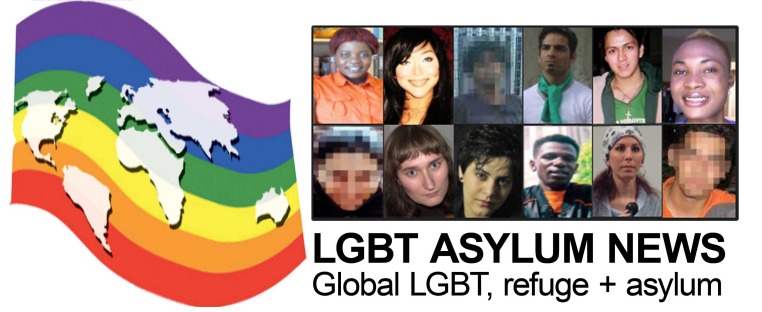 |
| Migrants from Afghanistan, Pakistan, Palestine, Democratic Republic of Congo and Somalia peer out from behind a fence of a temporary holding facility for migrants in Chop, Western Ukraine. |
The walls of fortress Europe have grown increasingly impenetrable of late. A planned fence on the Greek border with Turkey has received some attention. Not so the situation in western Ukraine, where there a growing community of refugees, mainly from Afghanistan and Africa, seeking entrace into the European Union have congregated. Effectively trapped in limbo, these asylum-seekers are subject to abuse, exploitation and torture.
The border crossing between Ukraine and Poland at Shehyni shows up the disconnect between Ukraine and its EU neighbours. On the Ukrainian side, merchants peddle cut-price booze and tobacco in dusty little shops. A smattering of middle-aged women gather in a dark café to tape packs of cigarettes to their arms and legs like bands of ammunition. They trundle through a long maze of gates and turnstiles on their way to the orderly Polish border control-office, where they will test their acumen with exhausted-looking young border guards. Outside, a dog travels freely between the EU and Ukraine via a small hole in the fence.
A lengthy, costly and often humiliating visa regime has made travelling west nearly impossible for most Ukrainians. After shelling out at least a month’s worth of the average Ukrainian salary for the proper clearances, travellers must often report back to the appropriate Kiev-based embassy with visual evidence of their movements: this usually means an impromptu slideshow with their digital camera. Ukraine has made numerous concessions in hopes of easing these restrictions; EU citizens can enter Ukraine for three months visa-free, for example.
January 1st marked the anniversary of one of the most problematic of these concessions. More than a year ago the EU signed an agreement with border countries, including Ukraine, that would see them accept third-country nationals who had illegally entered the EU via their territory. In return, Ukraine received €35m to spend on migration management and the hope that visa requirements for its own citizens would be eased. But as a recent Human Rights Watch report has found, the agreement has been a failure for just about everyone—especially asylum-seekers.
The report says that as of December 2009, there were 2,334 recognised refugees in Ukraine, more than half of whom were Afghans. Human Rights Watch interviewed 161 of them, living in various communities in Ukraine’s western fringe. The report paints an unsettling picture of desperate people subject to violence, extortion and arbitrary detention at the hands of the Ukrainian authorities.
The report holds authorities on both sides of the border accountable. It hammers Ukrainian refugee law, and accuses the EU of failing to take its share of responsibility for ensuring refugee protection. Bill Frelick, director of the Human Rights Watch Refugee Programme and co-author of the report, agreed to answer a few questions.
Q: How would a typical asylum-seeker end up in Ukraine?
A: Most seem to enter via Russia. Some enter Russia legally, depending on where they are coming from. Many, if not most, have no idea they are going to Ukraine and certainly do not plan to end up there. I remember one Afghan, dumped by his smuggler in a market in Kiev, thinking he was in Germany. He asked some Afghan men in the market where he was. The answer, which he gave to me in English, was, "Dude, you're in Ukraine."
Q: What is daily life like for these asylum-seekers?
A: Many, particularly those with darker skin, feel quite vulnerable. We heard a number of accounts of racist and xenophobic attacks. Police harassment and bribe demands are another constant.
Q: Do EU citizens realise that asylum-seekers are treated terribly in buffer countries?
A: By reporting on the treatment of returned migrants and asylum-seekers in places like Libya, Turkey, and Ukraine, we are hoping to draw attention to their treatment. This report is the third I've written on this subject. (The previous two focused on the Greece/Turkey border and the nexus of Italy's forced return of boat migrants and Libya's mistreatment of returnees.
Q: What impact has the change of government in Ukraine had?
A: It hasn’t had any particular impact on readmission. But the constant churn in bureaucracies has paralysed Ukrainian asylum procedures. For example, just before we arrived to release our report, on December 10th, the state entity responsible for asylum procedure was dissolved.
Q: The report mentions an improvement since a previous Human Rights Watch investigation, in 2005.
A: That related specifically to the physical layout of detention centres, and the conditions of detention in terms of cleanliness and overcrowding. This is directly attributable to EU-funded initiatives. We saw no improvement in the functioning of the asylum system or the brutal treatment of migrants in custody.
Q: How common is it for refugees to abandon their quest to get into the EU and make an attempt at integration in Ukraine?
A: We met a group of African and Middle Eastern residents, working in some of the markets in Kiev, who had made an attempt at integration. Some had married Ukrainian women. But all said they were marginalised in Ukrainian society and subject to harassment.








 Join our page
Join our page


0 comments:
Post a Comment